Everest & Gokyo Lakes Circuit
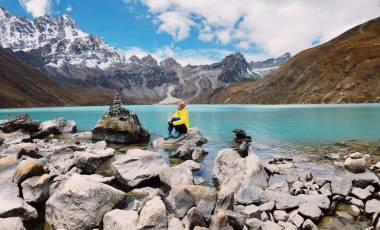
Everest Base Camp Trek
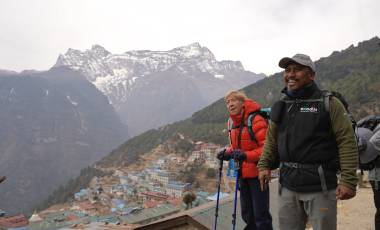
Annapurna Circuit Trek
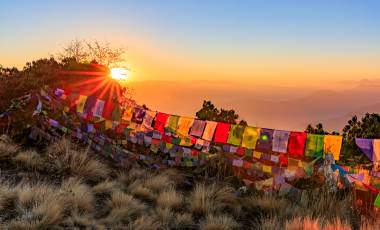
Annapurna Sanctuary Trek
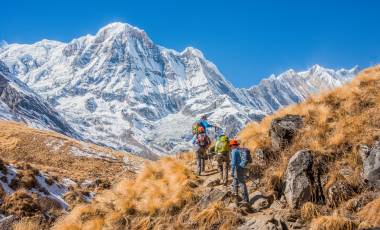
Manaslu Circuit Trek
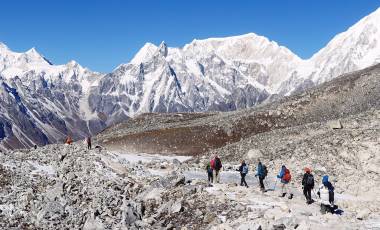
Shape your adventure: With Extensions, every beginning and ending is yours to create. Learn More.
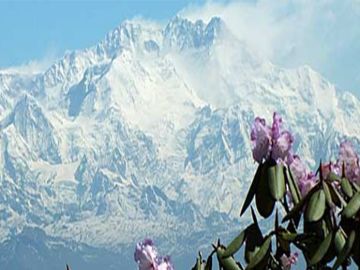
Read time – 4 minutes
The instructions were simple. If it was clear at 5am, Dilip would rouse us with a shout of “mountain view” and a steaming cup of tea.
If, however, the Himalayan heights were obscured by a stubborn morning mist, it would be a 6am wakeup call accompanied by a cup of tea and bowl of warm water. Not being a morning person I was hoping for the latter.
So when Dilip’s softly accented voice said: “mountain view” my initial response was to groan, roll over and return to slumber. He did not give up so easily. The second time he was more insistent. After a couple of minutes of fumbling around with buttons, zips and laces, I emerged sleepily from my tent and was instantly bathed in the golden hues of a Himalayan sunrise.
The view from 3,636m was every bit as jaw dropping as it deserved to be. Kanchenjunga, the world’s third-highest mountain at 8,586m was hulking over us, framed by the bright blue sky and the lush green hills dotted with the riotous reds and pinks of the rhododendrons rippling below.
Walking along the Singalila Ridge, as the name suggests, you are always above the action; Nepal lies to one side, India on the other, and the former Kingdom of Sikkim stretches out ahead. A patchwork of undulating valleys scattered with remote settlements, small communities eking out a living by growing what produce they can on the steep hillsides, lies in the shadows of the world’s four highest peaks.
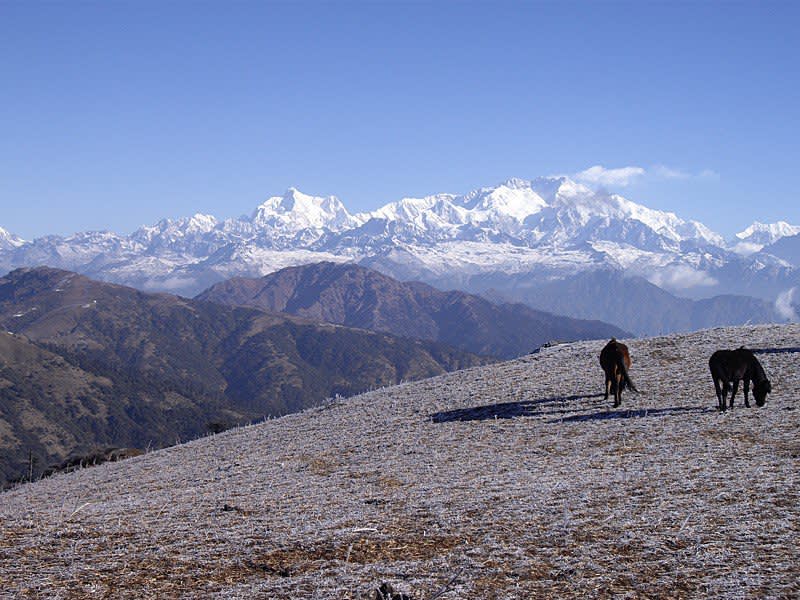 Horses grazing in the Himalaya
Horses grazing in the Himalaya
The final night of the trek was spent in one of these mountain villages, a tiny hamlet accessible only on foot. Their striated gardens were planted with rows upon rows of beans, corn and dozens of other fruit and veg, all for local consumption or for trading with nearby villages.
On the trails leading here, we passed villagers demonstrating their resilience and resourcefulness successfully transporting everything from corrugated roofing to stacks of bamboo on their backs. It was an immense privilege to stay so close to a community like this one, a world away from the busy London suburb where I live.
Over our last supper on the trek, the group reminisced about the 90km of Himalayan splendour we had had just traversed. Everything had been beyond expectation. The views were staggering with every step; even the fog added a touch eerie mystery to the mountain vistas.
The walking had not been too challenging, just a few short, sharp sections but these are no problem – the Nepali guides will remind you to go “bistari, bistari”. We recalled the many viewpoints, the sunrises and sunsets we had encountered along the fragrant magnolia and rhododendron-fringed trails.
We had cooled off in the cloud forest, rustled our way through a bamboo forest, side-stepped wild orchids, paid our respects at the various Buddhist monasteries and Hindu temples en route, and somehow passed few other people along the way.
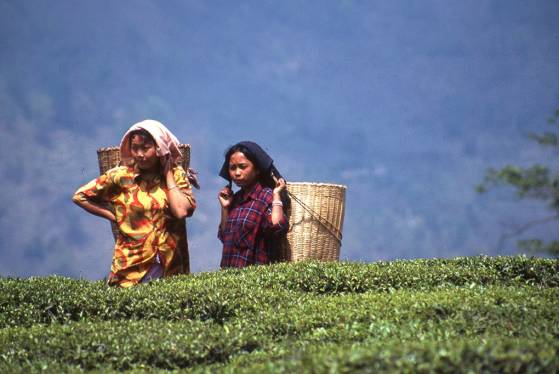 Local farmers
Local farmers
Off the trails, the next week was spent sightseeing around the northern part of West Bengal and Sikkim, India’s smallest and newest state. We delved deep into life here.
First stop was Darjeeling, where we headed to a tea plantation to taste more of the local brew and stock up with few boxes to take home. Despite having drunk little else besides water and tea on the trek, we still found ourselves engrossed in the process that took place to produce each little, ordinary cuppa.
Next, we squeezed into the narrow carriages of the Toy Train for a forty-five-minute ride to Ghoom. The narrow-gauge rails snake through the hillside, taking us on a slow clickety-clack journey that gave us a new vantage point after our days of trekking, passing so close to the main road in Ghoom it felt as though we might lean out of the open windows and snap up some steaming samosas and cold drinks from the little shops outside.
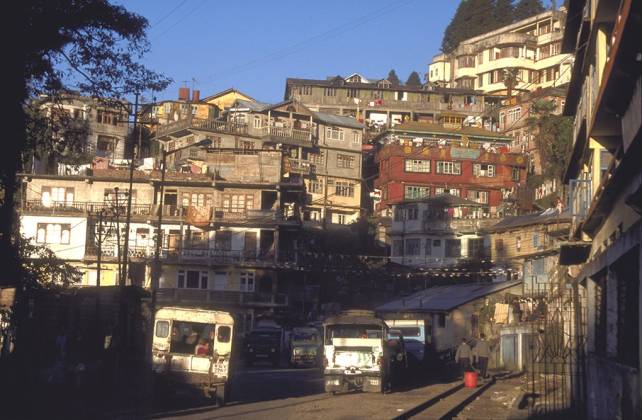 Gangtok
Gangtok
A winding road following the river valley brought us to a new treasure: Gangtok. A unique hilltop settlement, the town is a centre of Tibetan Buddhist culture and is pretty wealthy by Indian standards. Here any preconceptions I may have had of India melted away.
We stayed in a lovely painted local home turned guest house, where we were plied with piles of curry and chatted about politics and matters of state; everyone here had an opinion, about the royal family or the different ethnicities of modern India.
From this contemporary city, we went to Kalimpong, steeped in trekking heritage; we couldn’t miss a visit to the Himalayan Hotel – an iconic stopover spot for many famous mountain climbers over the years.
Since the days of Hillary and Tenzing, this has been popular with climbers, authors, and trekkers – it isn’t hard to see why, with its pretty, tranquil gardens and attentive service.
I settled with a final brew of Darjeeling and let my mind wonder where my feet had wandered the past fortnight, through the majestic mountains, hillside villages, and finally here, to a version of India nobody had mentioned before.
This trip shows you a very different side of India; far away from the glitz and glamour of Bollywood, this mountainous pocket of India is a world of maroon-robed monks, fresh momos (steamed dumplings) and tea. Lots and lots of tea.
If you want to experience walking in the Himalayas for yourself, browse our trips below.




